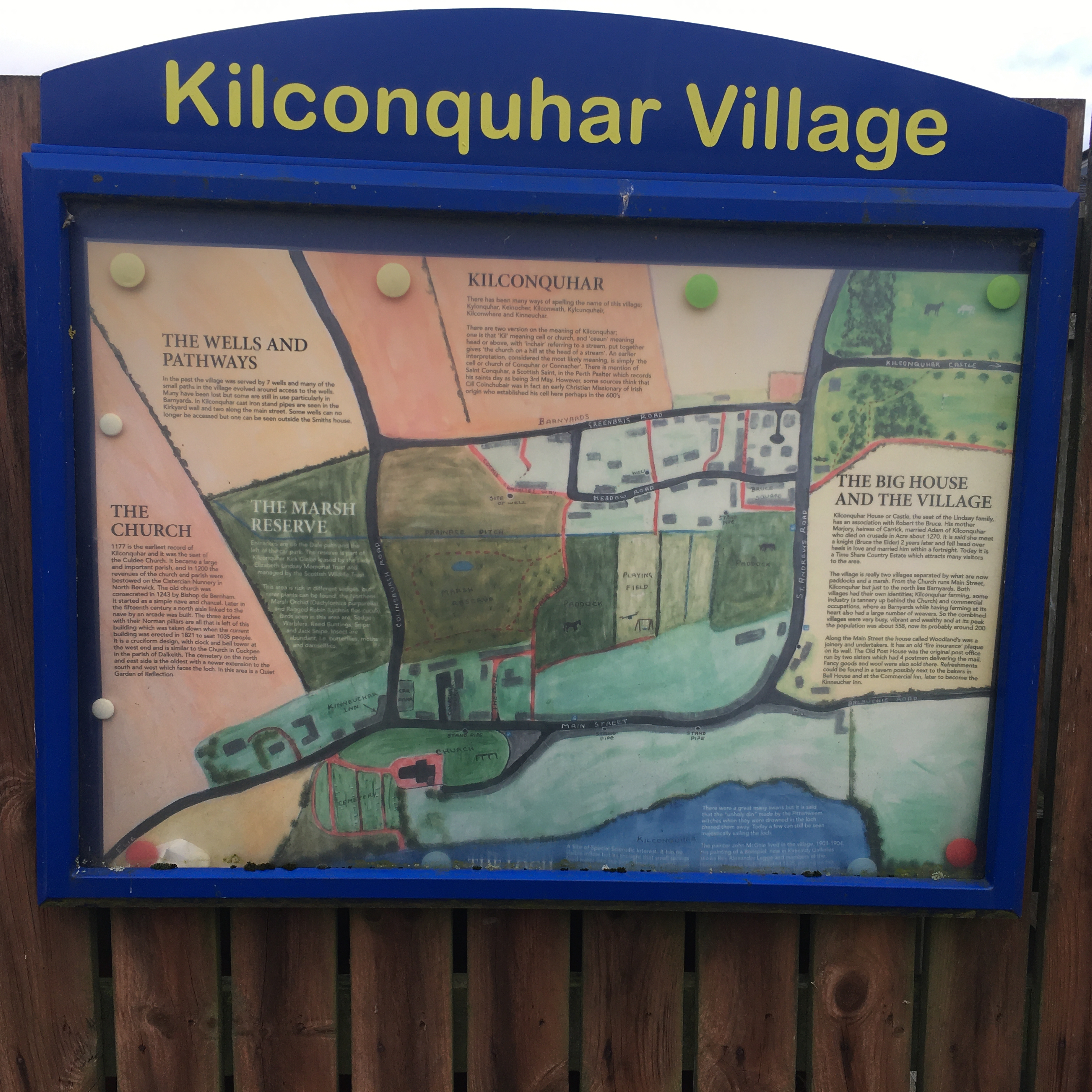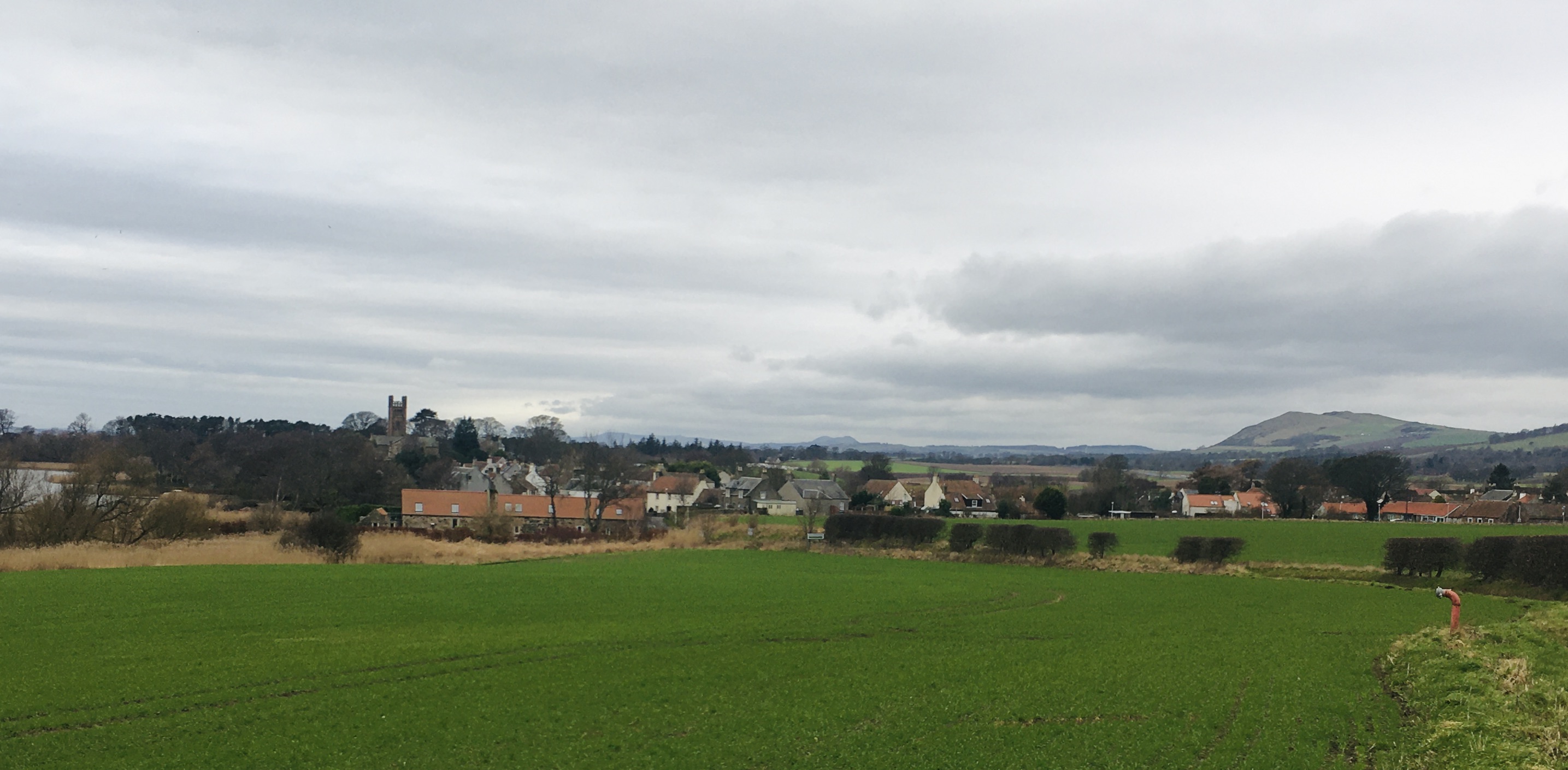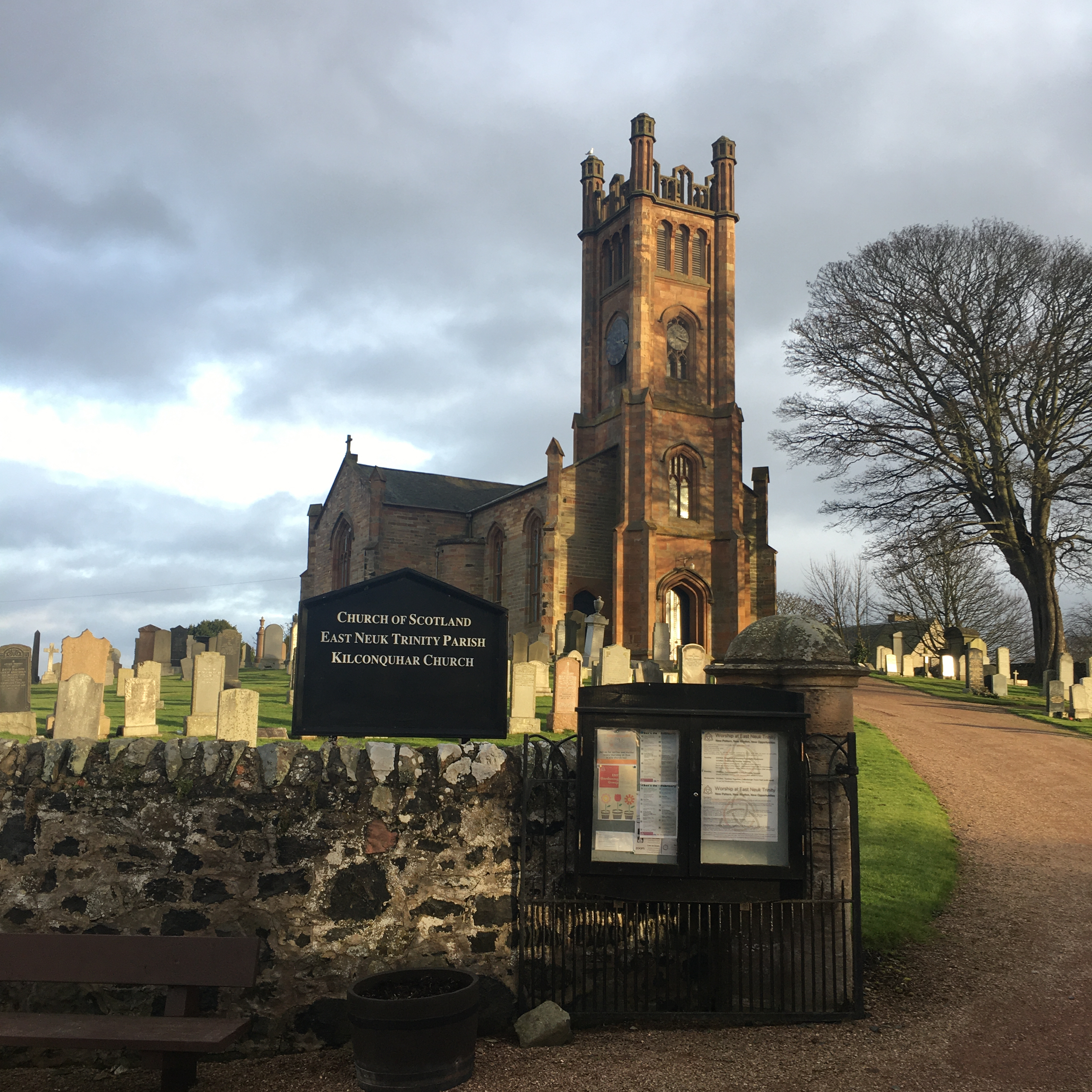History of Kilconquhar
The history of Kilconquhar
Here you can find information on the origin and history of Kilconquhar Village, There is also a note on how the village's name is pronounced!
Kilconquhar's origin and history (adapted from Eunson 2005*)
The parish of Kilconquhar is one of the largest in Fife.
The origin of its name is thought to derive from the presence of a 'Kil' or cell of a holy man or hermit called Conacher. It is possible he was a Culdee (a sect of the old Celtic church which flourished in Fife between the eighth and ninth centuries).
However his name may be a corruption of 'Canneach', (anglicised to St Kenneth), who died in AD 600 and is said to have founded the church at Kilrymont, the forerunner of St Andrews Cathederal. If this theory is true it may help explain the religious importance of Kilconquhar Parish and why it is such a holy place.
The earliest mention of Kilconquhar Church is in 1177. At that time it commanded the highest salary of the 13 churches in existence between Crail and Kennoway.
During the 13th and 14th centuries, Kilconquhar was part of the wider 'Rires' estate, part of the vast fiefdom of the Earls of Fife and was impacted by the break-up of that estate in the 15th Century.
During the religious conflicts of the 17th Century, the parish was universally on the side of the Covenanters and the covenant was sworn here in 1643 and 1648. In 1681, two Kilconquhar weavers were executed for publishing covenanter propoganda - perhaps unfairly so as they only put their names to it.
Like Colinsburgh, Kilconquhar prospered in the 1700's, especially with regard to agriculture due to improved drainage and field enclosures. In 1792 potatoes provided the local poor with half their sustenance, as well as being used for animal fodder and for distlling whiskey!
By 1837, the population of Kilconquhar and Barnyards was 558 and they remained predominantly an agricultural centre (although there was other employment in weaving and coal-mining). Increasing mechanisation in the 1950's also impacted Kilconquhar, just like it did in Colinsburgh. with many men leaving the village as jobs dried up, to seek employment elsewhere.
In 1951, Kilconquhar was described as 'virtually moribund' and it continued to decline in the 1960s with the closure of the railway and the few remaining village shops. However within the next decade it was transformed via sensitive restoration into the elegant retirement and commuter village that it is today with a current population (inc. Barnyards) of 261.
* - Old Kilconquhar and Colinsburgh, Eunson E, Stenlake Publishing, 2005
How to pronounce 'Kilconquhar'
Visitors may note that the village's name can be pronounced by locals in one of two different ways as follows:
Some say: 'Kill-Conker', whereas others say: 'Kee-Nucker'.
Both forms appear equally valid and the difference probably relates to the origin of the place-name (see above) and also the different ways the village's name has been spelled over the years, including the following:
- Kilconquhar
- Kinneuchar
- Kyloquhar
- Keinocher
- Kylecunquhair
- Kilconwhere
It's entirely your choice which you prefer, but please don't do what I did when I first visited the area, all those years ago, and pronounce it:
'Kill-Con-Koo-Har' (!)
Village Information Board on South Wynd.

View of the Village from the East

Kilconquhar Church


